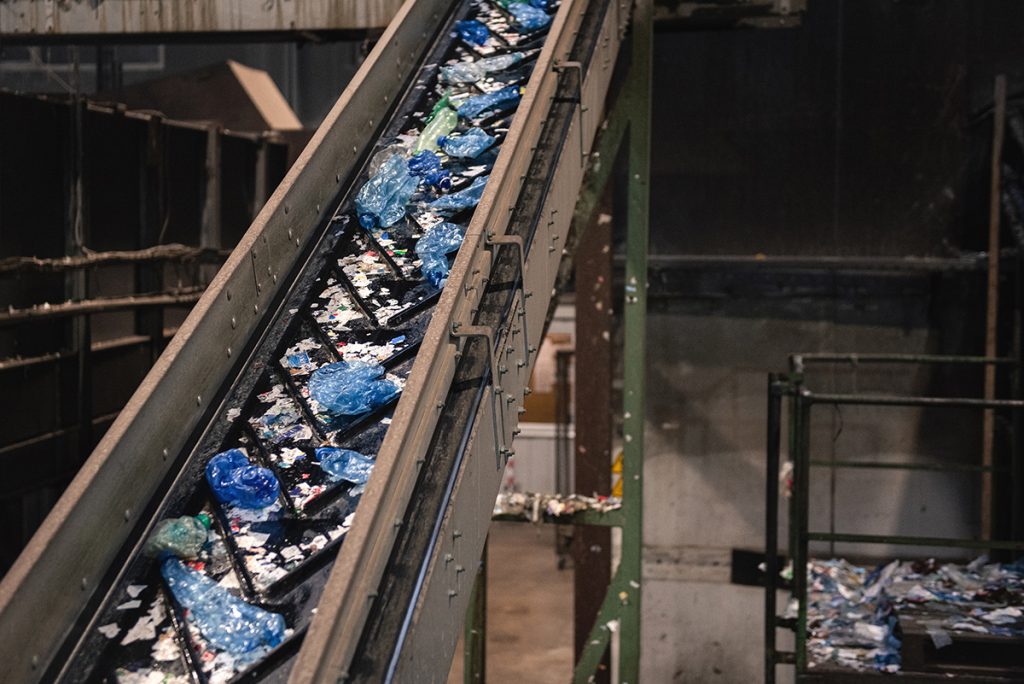
A new and modern waste sorting plant is being built in Acone, Salaspils Municipality
In order to promote waste sorting in Latvia, and thus also to accelerate the achievement of the European Union’s 2025 targets, Eco Baltia, a company of the largest environmental resource management group in the Baltics, Eco Baltia vide Ltd, will invest EUR 11.7 million in the construction of a sorting plant for unsorted municipal and separately collected waste in Acone, Salaspils Municipality, with a total capacity of 45,000 tonnes per year.
The new plant will be able to sort 20,000 tonnes of municipal waste and 25,000 tonnes of sorted waste annually (for comparison, the current sorting capacity of Eco Baltia vide’s plant at Getliņu iela 5 for secondary materials is around 18,000 tonnes per year). The plant is planned to occupy a 4,000 square metre site, including a 3,385 square metre building and 700 square metre of sheds. The new plant will employ around 70 people. The plant is expected to open in autumn 2024.
The new plant will have a multi-stage optical sorting system with the ability to change both the types of materials to be sorted and the quality control during the sorting process, to remove contaminants from the optically separated stream or, if the stream is too dirty, to select only the useful material.
“The main objective of the project and the biggest benefit from a business perspective is efficiency – significant savings in landfill waste, labour, sorting losses and energy consumption. Unlike other similar facilities, it will be able to sort both municipal and separately collected waste, but will not use intensive shredding and wind tunnels, instead focusing on adaptive equipment and optical sorting. This will save energy and recover as much recycled material as possible,” says Jānis Aizbalts, Chairman of Eco Baltia vide.
Unsorted municipal waste will be delivered to the plant from Eco Baltia vide’s Pierīga Region, while sorted waste will be delivered from Riga and Pierīga. Sorting will be largely automated: in the first stage, large and non-compliant items such as household appliances, bricks, bulky and hazardous waste, metal, glass, etc. will be manually sorted, while the rest will be sent to automated machines that sort waste of certain sizes, including PET bottles, paper, metal, glass and various packaging materials. At the end of the process, manual quality control is carried out to ensure a higher value of recyclable materials.
The plant project builds on seven years of experience at the Eco Baltia vide plant in Liepāja. Ideas have also been drawn from similar plants in Poland, Estonia and Lithuania. J.Aizbalts: “These are solutions that make it possible to separate as much glass and metal as possible, which by weight is the largest fraction of recyclable materials in municipal waste. We have brought together all the best technical solutions in one plant to make the sorting process as efficient and safe as possible, and it will be an important support for the European Union’s 2025 recycling targets for plastic packaging waste.”
Latvia generates more than 800,000 tonnes of municipal waste each year, of which approximately 50% is sorted and recycled. The European Union has set strict waste reduction targets for its member states, including a sharp increase in recycling rates – up to 65% of total waste by 2035. At the same time, the European Commission report points out that Latvia is at risk of missing a number of 2025 targets, including for plastics recycling. In addition, Latvia already has to pay the EU a plastic tax of around €16-20 million per year for the amount of plastic it does not recycle.
The merger of Eco Baltia vide and Pilsētas Eko Serviss has been completed
In order to further streamline the management and structure of JSC (AS) Eco Baltia and to improve the range and quality of services to customers, the road maintenance company LLC (SIA) Pilsētas Eko Serviss has […]
Eco Baltia vide LTD (SIA) increased its turnover by 44% last year and continues its steady growth
The environmental management company Eco Baltia vide LTD (SIA) closed last year with a turnover of EUR 49.32 million, which is 44% more than in 2021. The increase in turnover was mainly driven by the […]
Latvia unveils impressive environmental installation, Fashion Alley, highlighting the impact of the fast fashion
With the growing concerns over the impact of fast fashion and the fashion industry on the environment, a striking environmental installation, Fashion Alley, has been created in one of the central parks of Latvia’s capital, […]
Eco Baltia vide’s subsidiary in Lithuania, Ecoservice, has invested 700 000 EUR in a new sorting line for construction waste
Environmental management company Eco Baltia vide’s subsidiary in Lithuania, Ecoservice, has invested 700 000 EUR in a new and the first-of-its-kind construction waste sorting line in Lithuania. This will ensure that an even larger amount of […]





 Riga
Riga